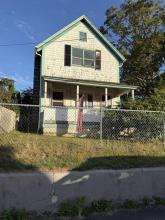Historian dives into the depths of local history
The seats in the Russells Mills Schoolhouse were once again filled on Sunday, Oct. 27 as over 30 people gathered for a lesson about local Native American history.
Local historian Richard Gifford gave a presentation on specifically the history of Acoaxet, the southwest section of Westport, from 1671-1742.
Gifford talked about forced relocation into an area east of modern day Dartmouth and west of the Sippican River, repatriations after King Philip’s War in 1676 and he also examined census data from 1790.
For about 40 years Gifford believed that Native Americans from Acoaxet had all “died out” by the early 1800s, but after he read biographies by Paul Cuffe, who was an African American and Wampanoag businessman from the mid-1700s to the early 1800s he came to realize that this wasn’t the case.
Based on the census data from 1790, Gifford found that there were Native American households from Acoaxet still in Bristol County, including 28 in Dartmouth and one in New Bedford.
“I found out, greatly to my delight, that they had not moved away,” Gifford said. “They were not extinct.”
Gifford studied land records, census data, historical deeds and original records as a part of his research into what truly happened to the Native population.
“That’s an attractive thing, to find out that the things I’ve been thinking were not correct,” he said.
Growing up in Little Compton with many ancestors from Westport, Gifford is interested in local history in general and has given around 25 presentations on various topics.
“Even though we may think we have a deep understanding of local history, oftentimes we don’t,” Gifford said. “That’s what really makes it interesting.”
While he tends to focus his research on Little Compton and Westport, Gifford’s current project focuses on the founding of Dartmouth in 1652, and specifically on three deeds and two court affirmations.
Local history, he said, is important to know because it gives people a “deeper understanding” of the town they live in.
“I think the closer you look at it, sometimes you find out, ‘Wow, I was so mistaken about that,’” Gifford said. “The deeper you look, the more you find that out.”













